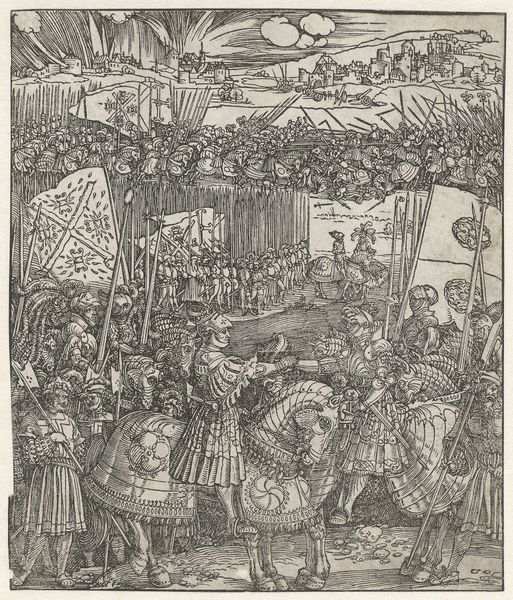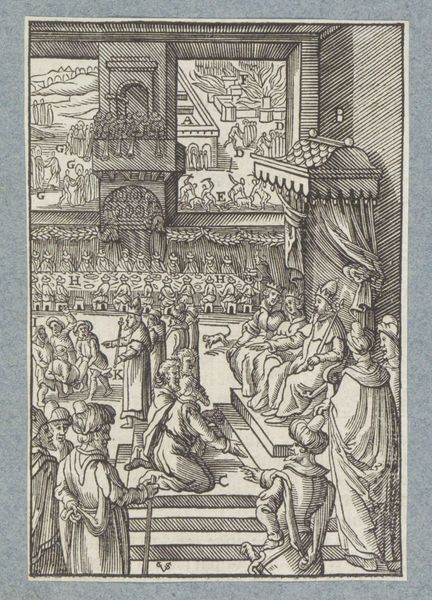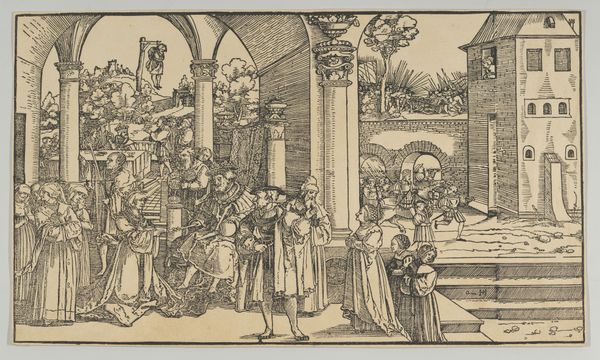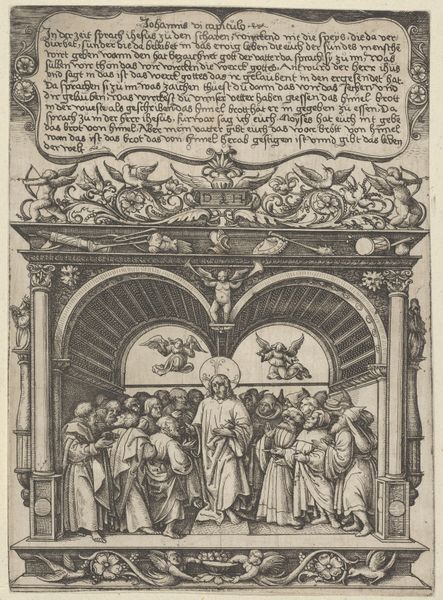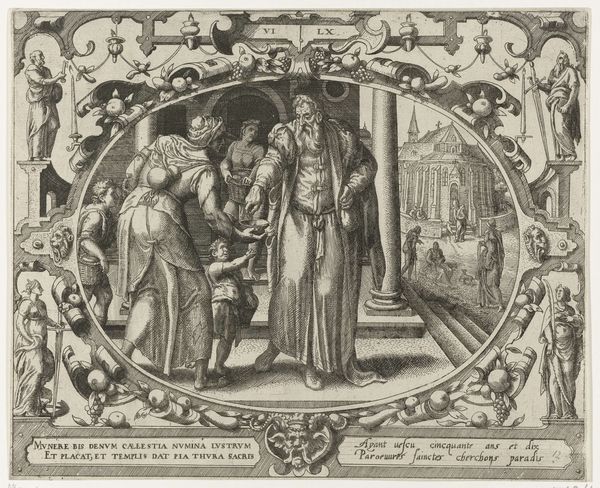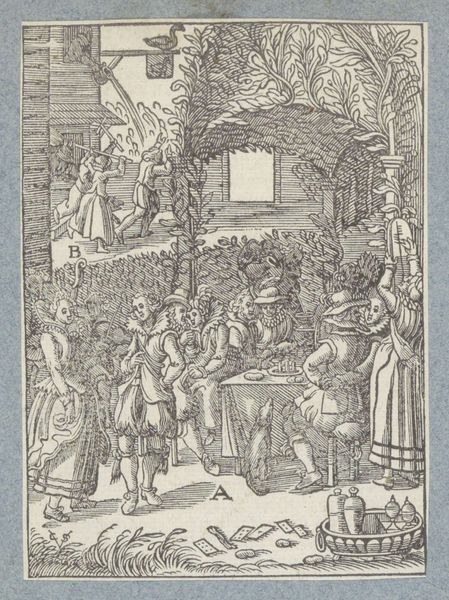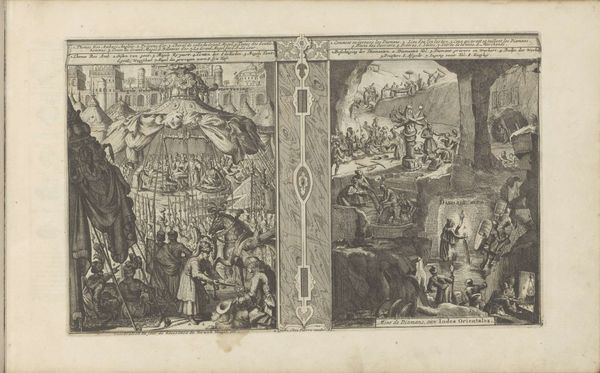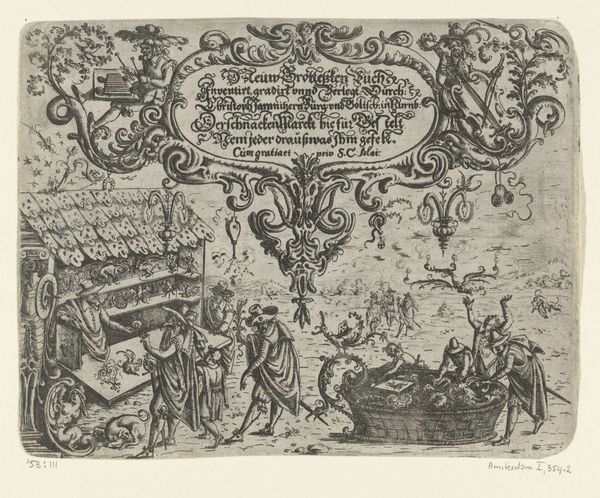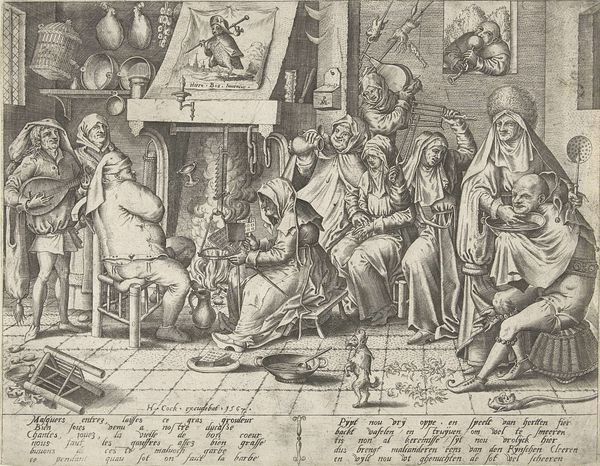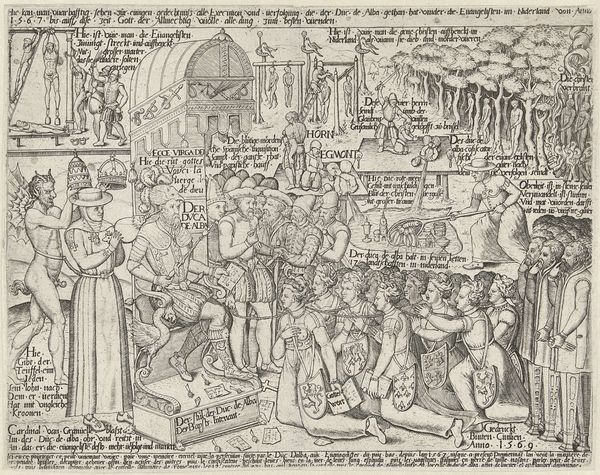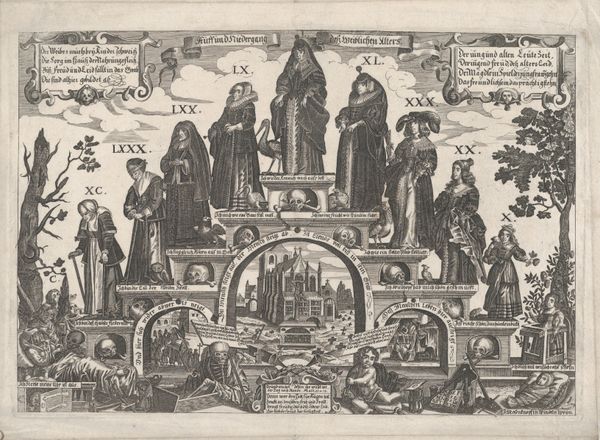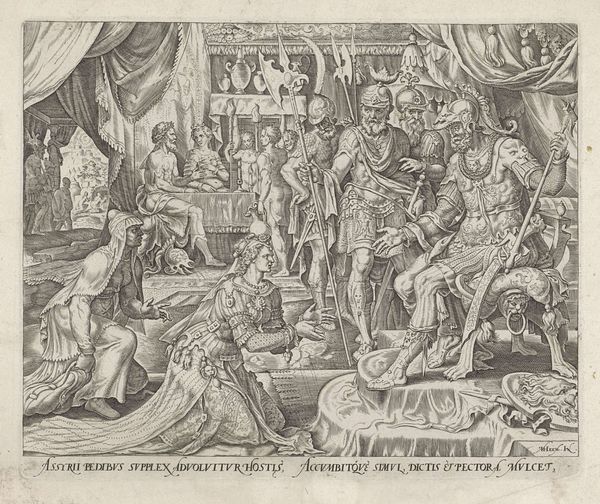
print, engraving
#
narrative-art
# print
#
figuration
#
11_renaissance
#
history-painting
#
northern-renaissance
#
engraving
Dimensions: sheet: 38.5 x 49 cm (15 3/16 x 19 5/16 in.)
Copyright: National Gallery of Art: CC0 1.0
Curator: Let's discuss "Judith Goes to the Camp of Holofernes," an engraving from around 1575 by an anonymous artist, part of the Northern Renaissance tradition. My first impression is how compartmentalized everything is. Each section seems carefully delineated, creating a sequence or layered narrative. Editor: Exactly. The division into discrete spaces highlights a temporal progression. It’s not just about surface aesthetics, though. Consider Judith as a figure—she steps forward to represent a crucial moment of resistance to masculine aggression, an archetype of defiance and strategic feminine power during wartime. The story highlights intersectional relationships among gender, power, and national security in a time of immense social and religious upheaval. Curator: I agree; the composition draws our eyes sequentially. From the council to her act of faith to the fateful encounter. The visual elements, such as the linear perspective and use of colour, seem to guide us methodically through each act of Judith's narrative. Editor: And each step serves a clear cultural objective—reinforcing not just religious tropes but prevailing social ones as well. The print cleverly integrates Judith’s personal conviction into the broader implications of patriotic symbolism during the late Renaissance. Do you agree? Curator: Partly. While I do value that broader thematic analysis, I think looking simply at the composition—its deliberate sequencing and controlled chaos—provides invaluable insights into the symbolic intent. Every detail matters, from architectural framing to facial expressiveness. Editor: Indeed. But for me, those details exist only to illuminate the very timely topic of women in positions of influence—navigating the socio-political expectations inherent in early modern Europe and continuing into modern culture. What does it really cost us to focus on form? Curator: Well, by analyzing form, we can then unpack cultural associations like gender, social standing and other intersecting identities represented through color, material or composition. By emphasizing details like the ornate, colorful trim of her dress or other markers, these attributes start to solidify cultural contexts beyond face value. Editor: Agreed, though those contexts and social meanings were, of course, the driving force behind it. Curator: Perhaps. Yet through studying formal strategies, we begin to comprehend just how this print has come to have power—what semiotic attributes or intentional patterns led it to resonate for so long. Editor: Absolutely, I've gained a sharper vision by recognizing how art historical forms enable such charged issues—religious authority and patriarchal expectations in a world on fire!
Comments
No comments
Be the first to comment and join the conversation on the ultimate creative platform.
